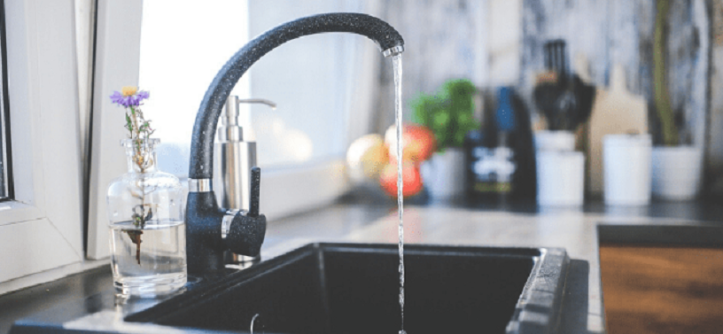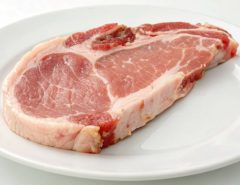Water pressure is a crucial part of your kitchen sink. It should be strong enough to provide water for all the kitchen needs, including washing the dishes and food preparation. To ensure good water pressure, you should also regularly clean the faucets and faucet cartridges.
In this blog, we’ll tell you how to fix low water pressure in the kitchen sink, how to unclog a clog in the line, and what to do if only hot water comes out of the faucet. We’ll also tell you about the tools and materials that you’ll need.
Common Causes of Low Water Pressure
Low water pressure in kitchen sinks can be caused by a number of factors, the most common being clogged faucet aerators. This is a cartridge inside the faucet that controls water flow and pressure into the faucet. If the cartridge becomes clogged, the water flow will be low and the pressure will also be low.
Another common cause of low water pressure in the kitchen sinks is a blocked or broken faucet cartridge. This causes the water supply to stop flowing smoothly through the faucet. The pressure of water will then drastically drop. Leaking toilets, shut-off valves, and pressure-reducing valves can all reduce water pressure in the kitchen sink as well. These components of plumbing work together to control the water pressure coming into the kitchen sink. They help to regulate water flow and pressure to ensure that the water supply is consistent and adequate for kitchen sink use.
However, mineral deposits, debris build-up, and corrosion can all contribute to low water pressure in the kitchen sink as well. These factors can clog kitchen sink plumbing components or displace minerals from hard-to-reach areas of kitchen sink plumbing causing low water pressure. For this reason, it’s important to regularly clean kitchen sink plumbing components with detergent and vinegar to prevent mineral buildup from interfering with water flow and pressure levels in the kitchen sink.
Troubleshooting Low Water Pressure in the Kitchen Sink
If the water pressure in the kitchen sink is low, it could be due to a number of causes, including a shut-off valve that isn’t functioning properly or a pressure-reducing valve that’s been closed too long.
When water pressure is low in the kitchen sink, water flow becomes inconsistent and can become aerated and hazy. To increase water pressure, you can locate the shut-off valve under the sink and turn it on, or replace the valve if it’s damaged. Additionally, pressure-reducing valves (PRVs) may be the cause of low water pressure in the kitchen sink. These valves regulate the water supply to sinks and other plumbing fixtures by reducing the water pressure at specific points in the line. The water pressure should be adjusted or replaced by a professional plumber if it’s low for an extended period of time. Preventative maintenance, such as closing and reopening faucet valves in the kitchen sink regularly, can also cause low water pressure.
Unclogging a Blockage in the Line
There are a few steps you can take to unclog a water line in the kitchen sink. First, turn off the hot water valve under the sink and disconnect the supply line to catch any spilled water.
After this, you can flush the supply lines with water by turning on the faucet until a neutral temperature is reached. You can also use a kitchen strainer or mesh spoon to remove any loose material from the aerator of the faucet. If the pressure has not improved, try using vinegar to clean the water line.
If a blockage is suspected in the water lines, contact a professional technician to identify and correct the issue as soon as possible. This will help prevent damage to your water supply line and plumbing system.
Checking the Aerator for Clogs
If your kitchen sink is struggling with low water pressure, an aerator, a mesh screen that covers the water outlet, is a common culprit. To check the aerator for clogs, first remove it from the faucet with pliers and a towel. Then, turn on the faucet to check the pressure. For thicker or more stubborn deposits, consider a vinegar soak overnight. If the pressure is still low after removing the aerator, the problem could be under the waterway, and you may need to call a plumbing service professional for help.
If the water pressure is low in your kitchen sink, try taking note of how long it takes water to flow through the sink. This should give you an idea of whether there’s any clog in the plumbing system or not. Also, make sure that the water entering the sink is hot and cold evenly. Apart from this, check if there is any buildup of minerals or sediment in the sink as well.
Pressure Issues with Hot Water Only?
If water pressure issues are occurring in the kitchen sink, it is likely due to low water pressure only. The most common causes of low water pressure in the kitchen sink include a clogged aerator, blocked or broken water cartridges, impaired water lines, and a malfunctioning pressure-reducing valve. To fix low water pressure issues in the kitchen sink, homeowners can try cleaning the aerator with vinegar or replacing the cartridge to improve water pressure. However, if these simple solutions don’t work, they should seek professional help. Homeowners can also try checking water main breaks, planned maintenance on plumbing systems such as repairing leaky faucets and hot water heater checks, and routine tests of fire hydrants to ensure the water supply is problem-free. Besides, homeowners can also fix the low water pressure issue themselves by carefully following the guidelines given by the plumbing professional
Testing Your Water Pressure
To test water pressure, first, turn off the valve controlling hot or cold water at the faucet. Next, feel the water pressure from the faucet. If your faucet has two handles, turn them the same amount. Finally, use a pressure gauge to measure the PSI of water (pounds per square inch) output from the faucet.
If your water pressure is too low, consider installing a pressure-reducing valve on the faucet. This valve can help reduce high water pressure and prevent pipes from getting clogged. Also, check for any water leaks or drips to make sure your water pressure is within the recommended level.
How to Clean or Replace Your Faucet Cartridge
If water is flowing from the faucet but it’s not hot, the cartridge may be clogged. To clean or replace the cartridge, start by turning off the water supply beneath the sink. If the aerator doesn’t fix the issue, check the faucet cartridge for clogs or debris. Once the faucet cartridge is clean, soak it in a vinegar solution overnight and then rinse it under hot water. If the cartridge is severely clogged, it will need to be replaced. When replacing the cartridge, take the removed one to a hardware store to get the correct type of faucet cartridge. By following these steps, you can troubleshoot and fix low water pressure in the kitchen sink easily.
Tools and materials you will need
The faucet cartridge in your kitchen sink plays a vital role by distributing water flow through the faucet. It is typically made of hard plastic, and it contains an intricate system of pipes, valves, and other plumbing components. If your faucet cartridge is clogged with sediment buildup or other debris, the faucet will leak water pressure or not work at all. This can be a huge hassle when you are using water for cooking, cleaning, or making hot drinks. So to clean the faucet cartridge and ensure optimal water flow, follow these steps:
Shut off the water supply underneath the sink using two shut-off valves, one for hot and one for cold water. This will prevent the faucet from running while you clean the cartridge.
Remove the cartridge covers and handles with a screwdriver. This will allow you to access the cartridge easily.
If there is a lot of debris inside the cartridge, it must be replaced. However, if only a small amount of debris remains, it can be cleaned using vinegar and a toothbrush. To clean the faucet cartridge effectively, soak it in a vinegar solution overnight. After cleaning the cartridge, replace it in the same manner that you removed it from the sink earlier (with the covers and handles removed). Also, check this out, What does it mean that the kitchen sink drains slowly and gurgles?
How to clean your faucet cartridge
To clean your faucet cartridge, turn off the water supply underneath the sink and remove the faucet cartridge. You can do this by turning the water supply valve to the “off” position or by pulling out the faucet cartridge. Then, run hot water to flush out the line. If you have a kitchen sink with a pull-out spray head, be sure to remove it from the hose and turn on the water supply to prevent water pressure issues. Additionally, mineral buildup in the aerator of the faucet can also reduce water pressure. To solve this problem, clean the aerator of a faucet or replace the cartridge. Besides, if your kitchen sink has sediment buildup in the aerator of a faucet, you must clean the aerator of the faucet or replace the cartridge to increase water pressure from the faucet.
How to replace your faucet cartridge
If you are experiencing low water pressure in your kitchen sink, it may be due to the cartridge component of the faucet. This component is responsible for filtering and purifying the water as it exits the faucet before it reaches the sink. To increase water pressure and reduce leaky faucets, replace the cartridge in your faucet. You can identify the type of cartridge in your faucet and purchase a replacement from your local hardware store. Before replacing the cartridge, shut off all water supply valves to the faucet so that there is no water flow to the sink fixture. Next, carefully remove the old cartridge and replace it with the new one. Finally, test the faucet and make sure the water pressure is consistent before turning on the water supply valves again.
Conclusion
Water pressure in kitchen faucets can be low for a number of reasons. First, it can be low pressure at the water source. If this is the problem, you may need to call a plumber or water expert for a line inspection and pressure test. Second, the water pressure could be low in the faucet itself. This can be caused by a clogged aerator or faucet aerator system. You can try removing the aerator and running hot water through it to see if this helps unclog it. If not, replace the cartridge. Water pressure in the kitchen sink can be low if the faucet is clogged or damaged. If you are facing low water pressure in the kitchen sink, comment below with your plumbing issue so we can help!




